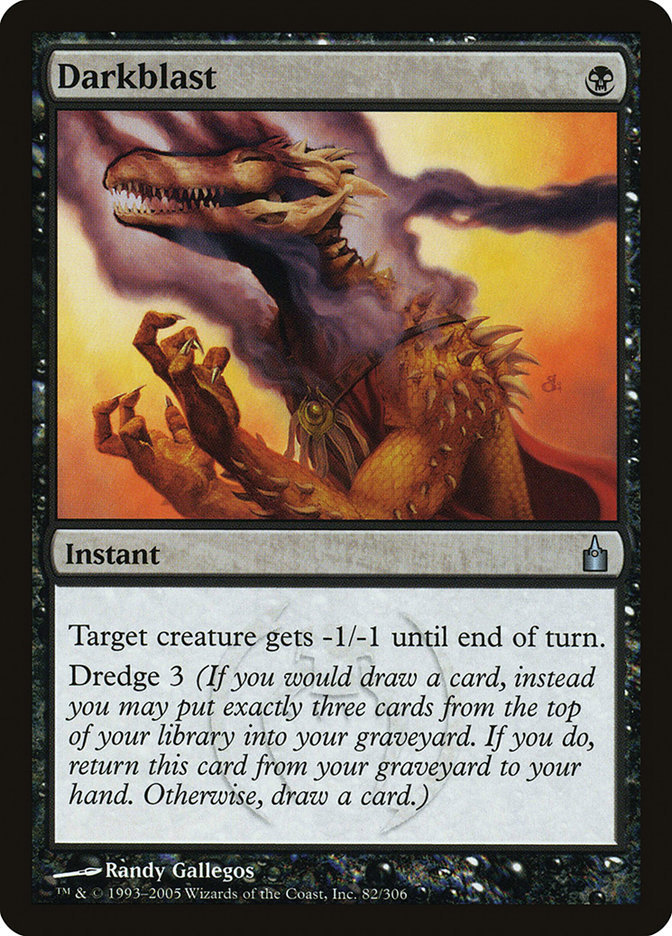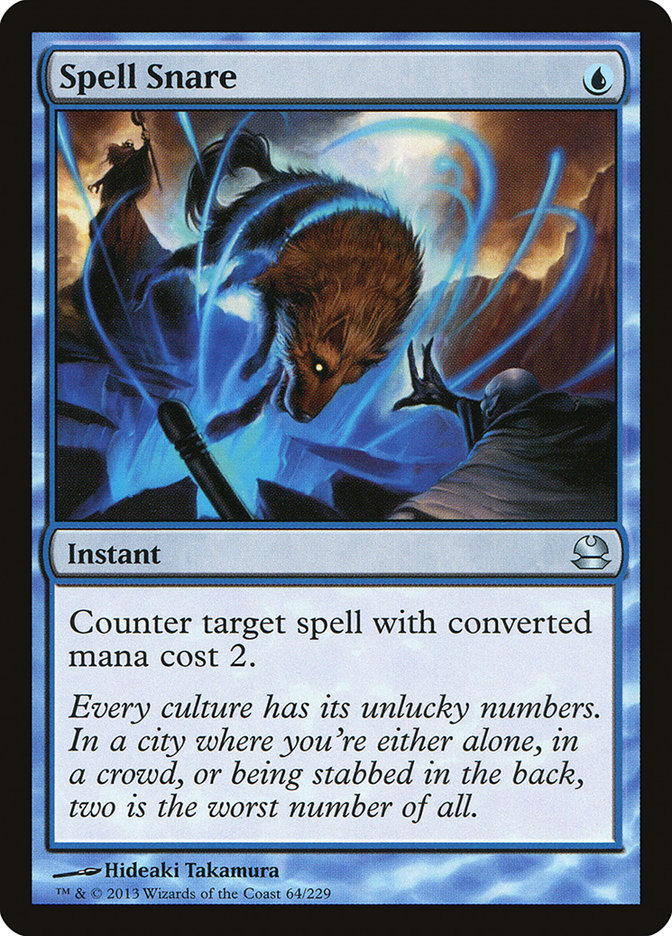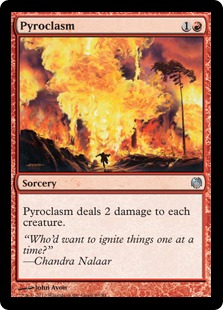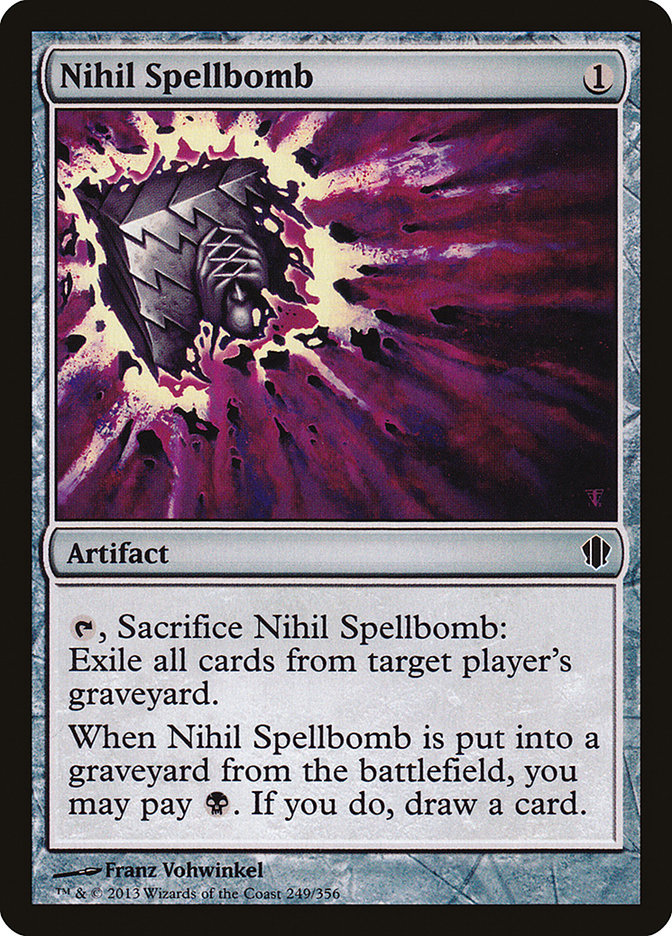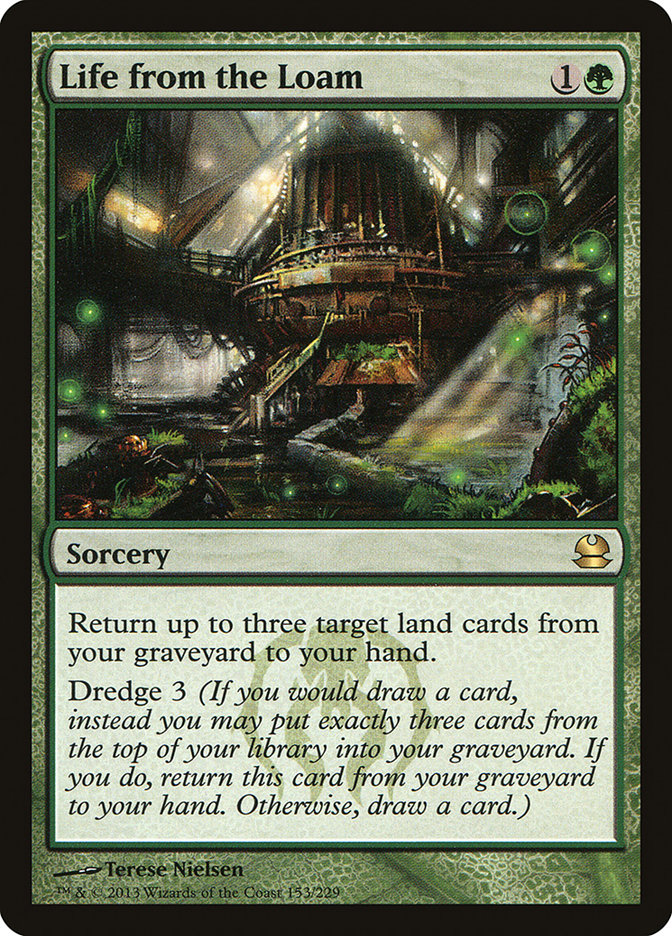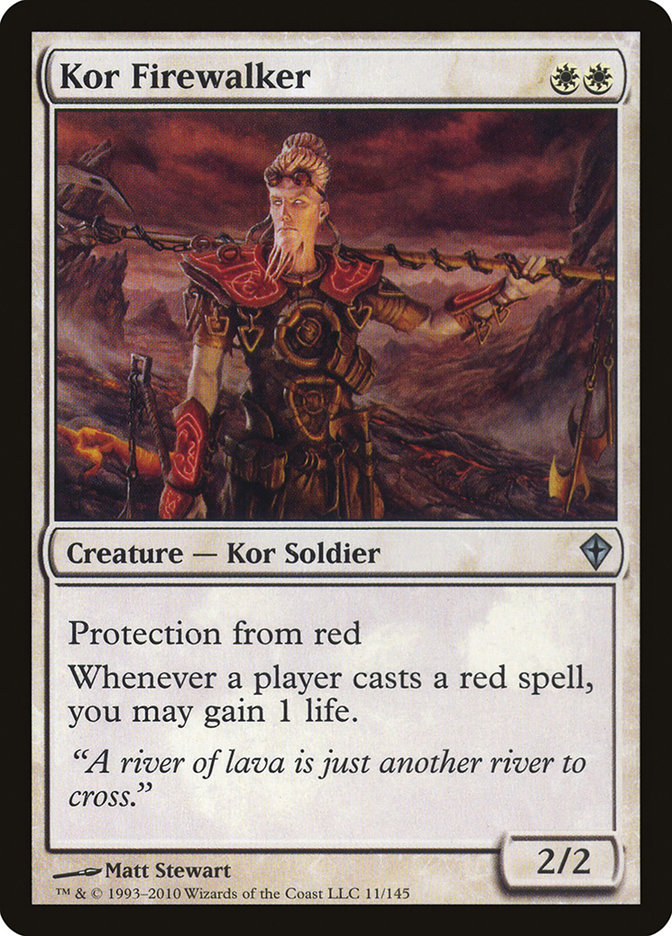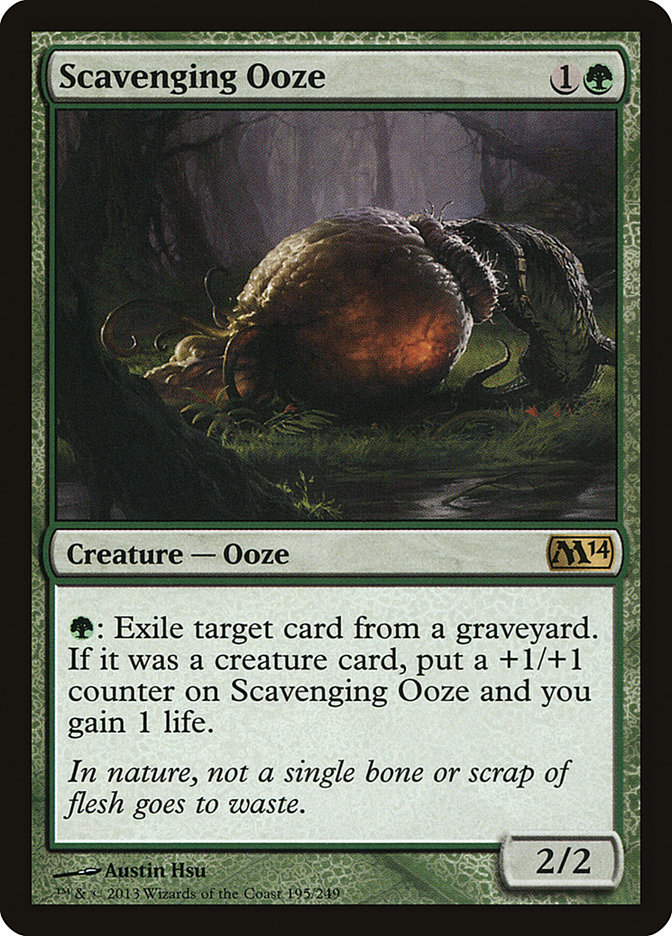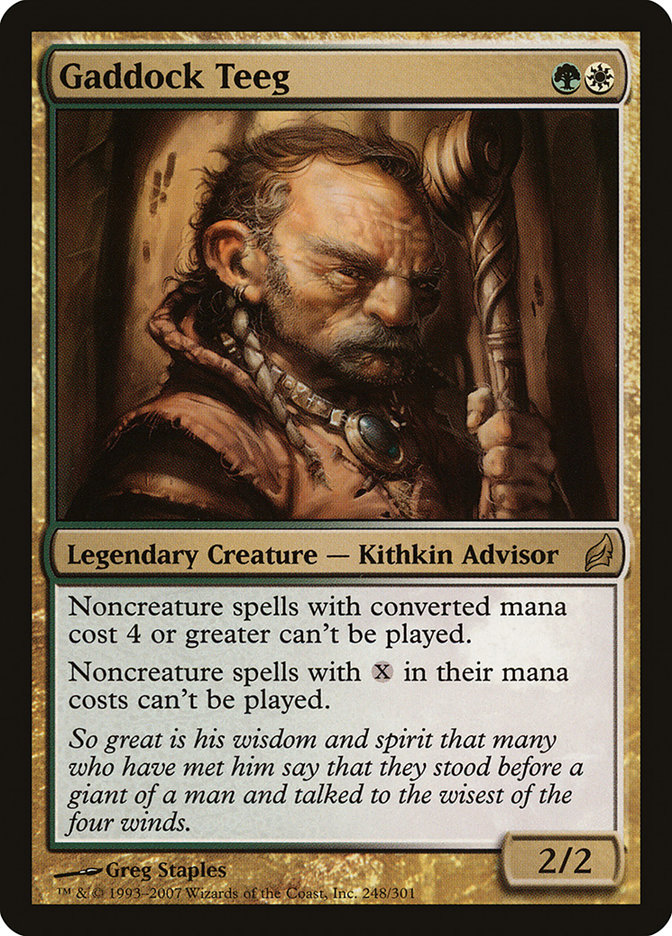When I presented a number of innovative decks last week, I closed the article with a plea for
innovation instead of complaining. However, even if you don’t actually have the time to try and improve a fringe archetype to the point of making it a true
contender, there are more easily implemented tweaks to existing strategies and sideboards to help you adapt to the metagame wrought by Khans of Tarkir’s
powerful delve spells.
If you’ve been following my articles for a while, you know that from time to time I like to share my views on a couple of cards that seem incredibly
well-positioned to take advantage of what the format looks like to me and my mental tally of such cards has once again reached the point where I feel it’s
worth sharing them, so that’s what I’m going to do today. I hope these either directly provide you with some good ideas on how to tune your deck in the
near future or at least help you uncover weaknesses in the metagame that you can exploit with cards that have a similar enough effect. So much for the
plan, let’s jump right in, shall we?
Darkblast has all the hallmarks of a successful Legacy card. It’s cheap, instant speed, and it can dominate opponents all by its lonesome – given the
correct conditions. So what are those conditions? Well, mainly they involve the opponent’s deck containing a multitude of one toughness creatures. Wait,
what was that? One toughness creatures? You mean like Delver of Secrets, Young Pyromancer, Mother of Runes, Thalia, Guardian of Thraben, and more than half
the Elves deck?
With mana curves as they are in Legacy, small creatures have always been reasonably common in the format, but since the rise of Treasure Cruise – and the
concomitant adoption of Young Pyromancer as the threat of choice in a multitude of decks – the number of creatures people play that actually survive a
Darkblast (or upkeep Darkblast, dredge during draw step, Darkblast again) is becoming quite minuscule, making the single black instant an incredibly
powerful tool to dominate the board.
This is even more true in the decks that are themselves trying to abuse the delve spells. Not only do you get an unconditionally reusable, cheap answer to
the majority of the threats in the blue tempo and midrange decks, it also fills the graveyard at an extremely rapid pace to fuel your Treasure Cruises.
This one comes to you courtesy of Nils Hakon Delphin’s Grixis Control deck from last week. Look at the
key cards and most powerful threats in many of the currently successful Legacy decks. Young Pyromancer and Stoneforge Mystic are two of the most played
creature threats currently, Counterbalance is a key tool for Miracles to ensure dominance on the stack, Infernal Tutor is the card Storm is most likely to
try to kill you with, Chalice of the Void (on X=1) is incredibly well-positioned, and Thalia, Guardian of Thraben is one of Death and Taxes’ key disruptive
pieces. Oh, and Tarmogoyf is still cheap and large, Cruisin’ or no.
In short, there are a multitude of extremely high value Spell Snare targets around at the moment, and many of them are actually critical to their deck’s
success in a game. In contrast, I’ve become more and more frustrated with Spell Pierce over the last couple of weeks. Mana curves have slimmed down even
more than they already had before Khans of Tarkir – with Jace, the Mind Sculptor being benched more often now that we have cheap burst card advantage in
the format – meaning that I’ve actually found it quite tough to make successful use of Spell Pierce outside of combo matchups lately. All of that means
that Spell Snare is just incredibly well-positioned at the moment.
To continue with the theme of adapting to the format’s changing threat bases, I already mentioned how small your typical Legacy creature is at the moment
when talking about Darkblast above. Everything I said about Darkblast’s power level in dealing with Legacy’s commonly seen threats above holds doubly true
for Pyroclasm, which not also deals with all the one toughness creatures but also destroys flipped Delver of Secrets, Stoneforge Mystic, Deathrite Shaman
and an already established army of 1/1s courtesy of Young Pyromancer all in one fell swoop. In fact, I think Pyroclasm is so well-positioned right now and
so many creatures die to it at the moment, that I wouldn’t be at all surprised if just jamming a number of them as your maindeck removal of choice was
correct, especially given that the growing number of maindeck Pyroblasts means that your red deck probably already has a reasonable way to deal with True
Name-Nemesis (on the stack) in its maindeck.
I’ve mentioned before that I don’t think relying on graveyard hate to deal with Treasure Cruise and Dig Through Time is a winning strategy. However, that
assumes that we have to invest a relevant amount of resources into trying to hate the graveyard. Nihil Spellbomb, on the other hand, is cheap, replaces
itself when used at an opportune moment, and could easily forestall your opponent from casting a delve spell for two or three turns, giving you time to
punch your own through first or otherwise position yourself in such a way as to mitigate its impact.
Add to that the return of graveyard strategies to the forefront of the format – Reanimator, Dredge, and Lands have all been doing quite well lately, and
Punishing Fire + Grove of the Burnwillows is extremely well-positioned at the moment – and having a little bit of graveyard hate in your maindeck actually
starts to sound enticing. There just are very few decks around where you can’t gain at least a bit of value with Nihil Spellbomb right now, and the
opportunity cost of having the card in your deck is low enough due to its ability to quasi-cycle that it seems like we should see a copy or two turn up in
black maindecks moving forward.
Relic of Progenitus has similar possible upsides, but the fact that it exiles both graveyards makes it a lot harder to justify – as I said, the majority of
decks are trying to generate at least some value from their own graveyards right now, meaning the reason Spellbomb is great makes it harder to actually
want to put Relic into your own deck.
Between Containment Priest and the delve spells, there has been an interesting development in the graveyard hate people tend to run: as mentioned with
Relic just above, players try to avoid nuking their own graveyard in the process of dealing with yours. Grafdigger’s Cage and Containment Priest are a lot
more popular than hard hate like Rest in Peace as a result, and Life from the Loam conveniently ignores both of these.
Add the fact that the rise of U/R Delver and Treasure Cruise-fueled Stoneblade lists have led to people becoming much more greedy with their mana
– due to a much lower saturation of Wasteland in the format and how bad lands are with the delve spells themselves – and Life from the Loam (with your own
Wasteland) is suddenly a card that a lot of people will be very hard pressed to defeat.
This could simply mean we should be playing the heck out of Lands.dec (a very good idea at the moment in my opinion), but I think it also means that there
are a lot of other shells that could benefit from a couple of copies of the dredge sorcery without going all-in on it to the same extent. An Abzan midrange
deck with Knight of the Reliquary and a couple of Loams suddenly has a great way to achieve inevitability in a number of matchups, for example, and
Intuition for Life from the Loam, Thespian’s Stage + Dark Depths or Academy Ruins + Engineered Explosives sounds like a very reasonable set up for a
control(-ish) deck’s endgame. Basically, if your deck can produce mana and has at least a couple of copies of Wasteland in its 75, I’d strongly consider
Life from the Loam right now.
The reason Kor Firewalker seems very strong right now is directly tied to Treasure Cruise. So far it looks like the perfect shell for Legacy’s version of
Ancestral Recall includes twelve cantrips and Young Pyromancer, and as a result, red mana is turning up in all kinds of different archetypes built around a
lategame of drawing three for a single blue mana. As a result, Lightning Bolt appears to be by far the most played removal spell in the format at the
moment, which means Kor Firewalker often plays out like a 2/2 hexproof creature.
That alone wouldn’t be enough to want to play it. However U/R Delver is still the most played Treasure Cruise deck, and it can have a really hard time
beating the combination of lifegain and shutting down Monastery Swiftspear.
I think Firewalker is especially interesting for all kinds of Stoneforge Mystic decks because those decks make incredible use of even faux
hexproof by handing out Umezawa’s Jitte. Conveniently enough, Kor Firewalker is also a tool to get some equip-able body onto the table against Punishing
Fire, something Stoneblade shells can struggle with, and it survives your own Pyroclasms if you decide to follow my advice from above.
The dearth of Wastelands has repercussions outside of just being able to play greedier manabases. Boseiju isn’t a tool for many decks – actually the two
main ones I can think of are Sneak and Show and Omni-Tell- but when most of your blue opponents will have to just look on and frown at the accumulation of
Red Elemental Blasts and Force of Wills in their hand while you resolve your game-breaking three mana sorcery unhindered, that’s a pretty spicy thing to
have happen.
Boseiju has always been a decent card in the sideboard of Show and Tell decks in my opinion, but right now the conditions to make it work are better than I
can ever remember them being. Instead of most of your blue opponents having an answer in their maindeck, people are playing more cantrips to draw more
counterspells (sorry, wrong fight bub), and at the same time the number of Duress-effects – the other effective way to fight Show and Tell when a Boseiju
is threatening to untap – is also at an all-time low. I think it’s totally defensible at the moment to both run a copy or two in your maindeck and go up to
a full playset against those blue opponents that really can’t deal with it postboard.
I mentioned incidental graveyard hate when I talked about Nihil Spellbomb above, but there’s more to Scavenging Ooze then just that. Yes, constant usage of
the exile ability will keep your opponent from unlocking the Ancestral Achievement, stranding their Treasure Cruises in their hand, and it fights Life from
the Loam and Punishing Fire like a champ, but da’ Ooze is also just very good right now.
With Lightning Bolt the core removal spell of many decks at the moment and a lot of small creatures that die easily floating around, Scavenging Ooze very
regularly has the potential to grow above Tarmogoyf size in short order, and once it does, many decks really can’t do much about it. Add a couple of points
of incidental lifegain – quite useful against Delver strategies – and Ooze sounds more and more like a card I’d want to have access to in any green deck
that intends to play a creature-based game.
The Scepter is a card that is easy to forget as something that was good, but that time has simply passed by now. Inspired by Valentin Mackl – who had two
copies in the sideboard of his Prague Eternal Top 8 U/R Delver list – I’m not sure that is actually true though, because Isochron Scepter is the
beneficiary of another card losing popularity: Abrupt Decay. Before Treasure Cruise, Abrupt Decay was common enough that you could expect to lose your
spell stick without getting much value out of it with annoying regularity.
Right now though, very few decks can actually handle the Scepter, and given the correct imprint that often is a game-ending thing to have happen. By now,
we’re all aware what Punishing Fire recursion does to a multitude of strategies, and doing the same with a Lightning Bolt of Swords to Plowshares for one
less mana a turn puts the screws on even tighter and without requiring you to make room for Grove of the Burnwillows in your manabase – a commodity that is
becoming rarer and rarer in a world with fewer Wastelands and where people try to cut as many lands as possible for cantrips to fuel their Cruising. At the
same time, Isochron Scepter is actually a great way to grind out opponents that don’t present creature targets through either imprinting Brainstorm or
something like Fire//Ice, essentially playing the role of a Jace, the Mind Sculptor that can’t be attacked or killed by Lightning Bolt and that is much
harder to Daze or Spell Pierce. All these things make Isochron Scepter a much under-appreciated way to go over the top of other fair decks in the mid- to
lategame.
This is a personal favorite of mine – among cards that I hate to see, that is. Those that follow my articles know that two of my favorite Legacy decks are
Miracles and Storm, and the kithkin advisor is a huge headache for both of these decks but luckily for me, he’s been on a steady downswing for a while now.
I’m pretty sure that’s something that should change though.
With the introduction of Treasure Cruise and Dig Through Time into the Legacy metagame, a vast number of decks that didn’t really care about having their
Force of Wills locked out against G/W creature decks in the past now suddenly lose their complete lategame plan to Gaddok Teeg hanging around on the board.
If your plan to fight other fair decks is to trade one-for-one early as often as possible before overpowering them with raw card drawing, it really really
hurts if said card drawing suddenly becomes uncastable.
That results in a metagame in which the vast majority of decks is severely hampered by Gaddok Teeg, to the point that I’m more than surprised that we
aren’t seeing most Death and Taxes decks running the card. There are fewer opposing Wastelands to punish you for a slight green splash, and it
significantly improves two of your toughest matchups – Storm (for obvious reasons) and Elves (you lose to Natural Order a lot) – and now getting Teeg down
with Mother of Runes to protect it means that both Delver and Stoneblade decks are stripped of most of their lategame potential and with it most of their
actual gameplan against Legacy’s resident prison deck.
…, 8, 9, and that’s 10
Well, here you have it, my latest accumulation of cards that I feel should get a lot more play than they currently do. Most of these are squarely aimed at
a metagame in which Lightning Bolt is the most common removal spell and that is shaped by the foremost strategy relying on a multitude of cheap spells to
enable an undercosted burst draw engine backed by flimsy creatures. That and an all-time low of a number of cards that have dominated much of the format
since Return to Ravnica – Hymn to Tourach, Deathrite Shaman, Abrupt Decay, and Wasteland foremost among them.
While Treasure Cruise puts its own constraints on the format, the resulting metagame exhibits its very own set of different holes to exploit, and each of
these ten cards does help us to do so in its own particular way. I hope these examples provide you with ideas on how to attack the format as it looks right
now and will help you find success in your upcoming tournaments. If you think I’ve missed one that’s particularly good right now, feel free to chime in
yourself!


